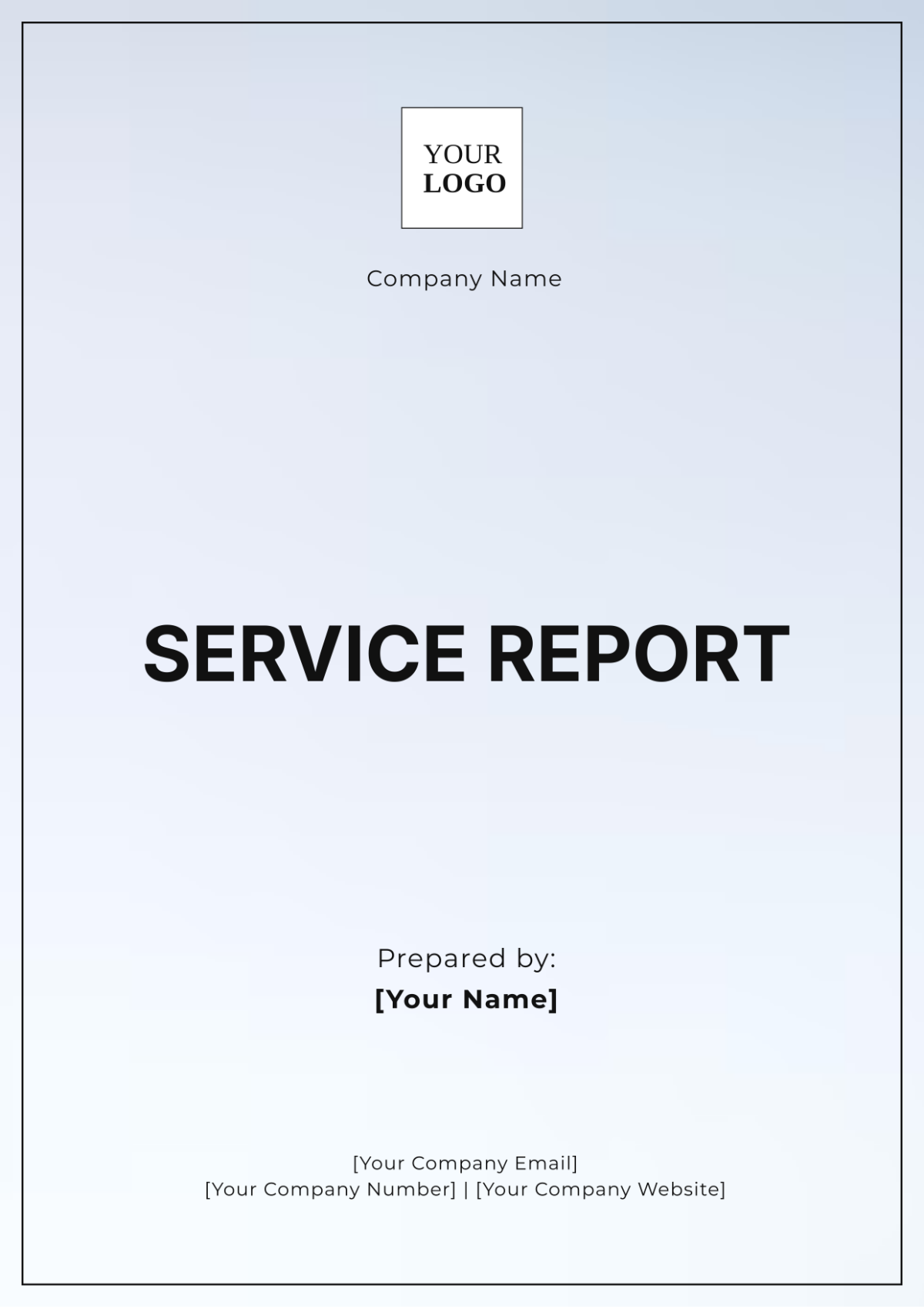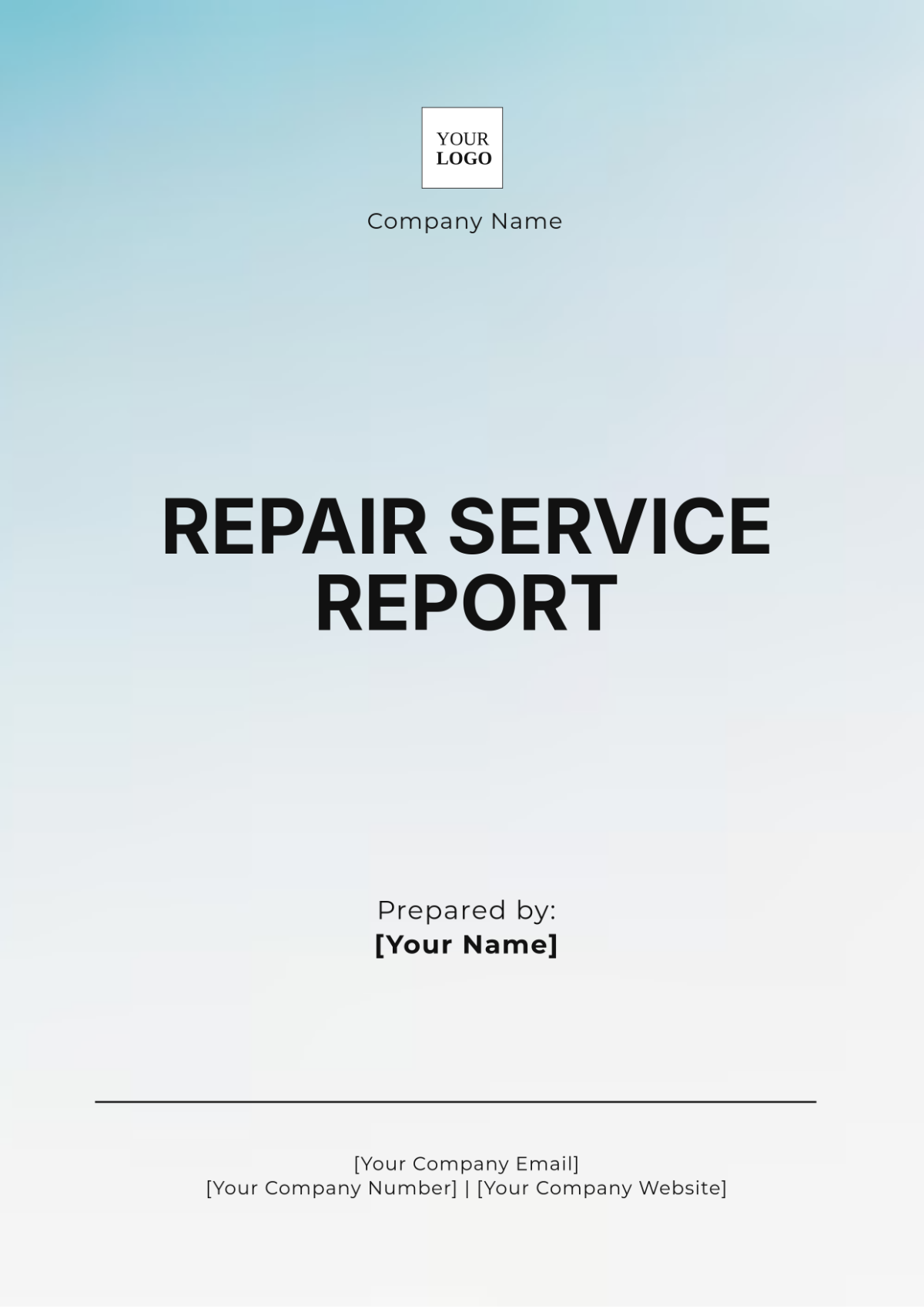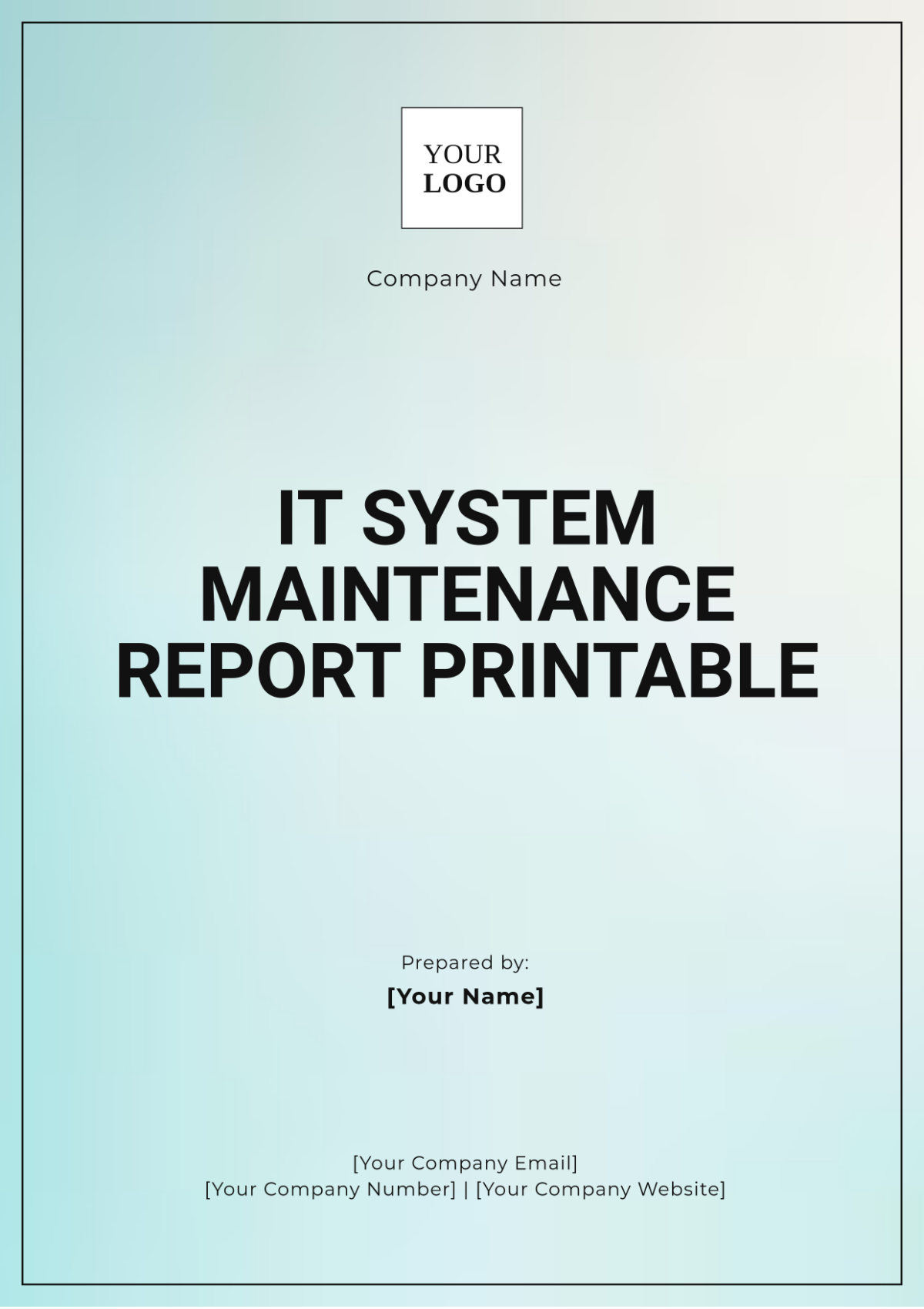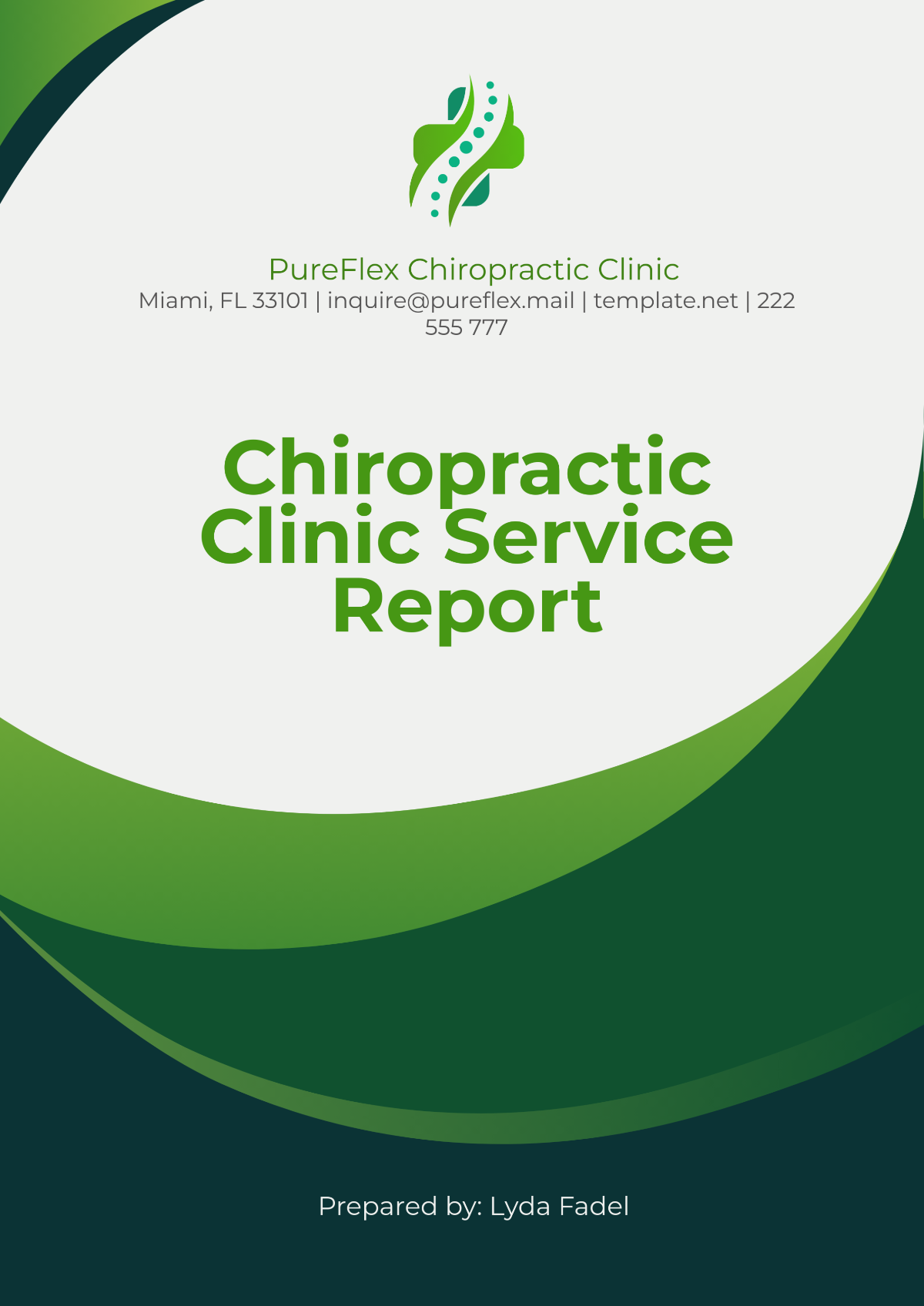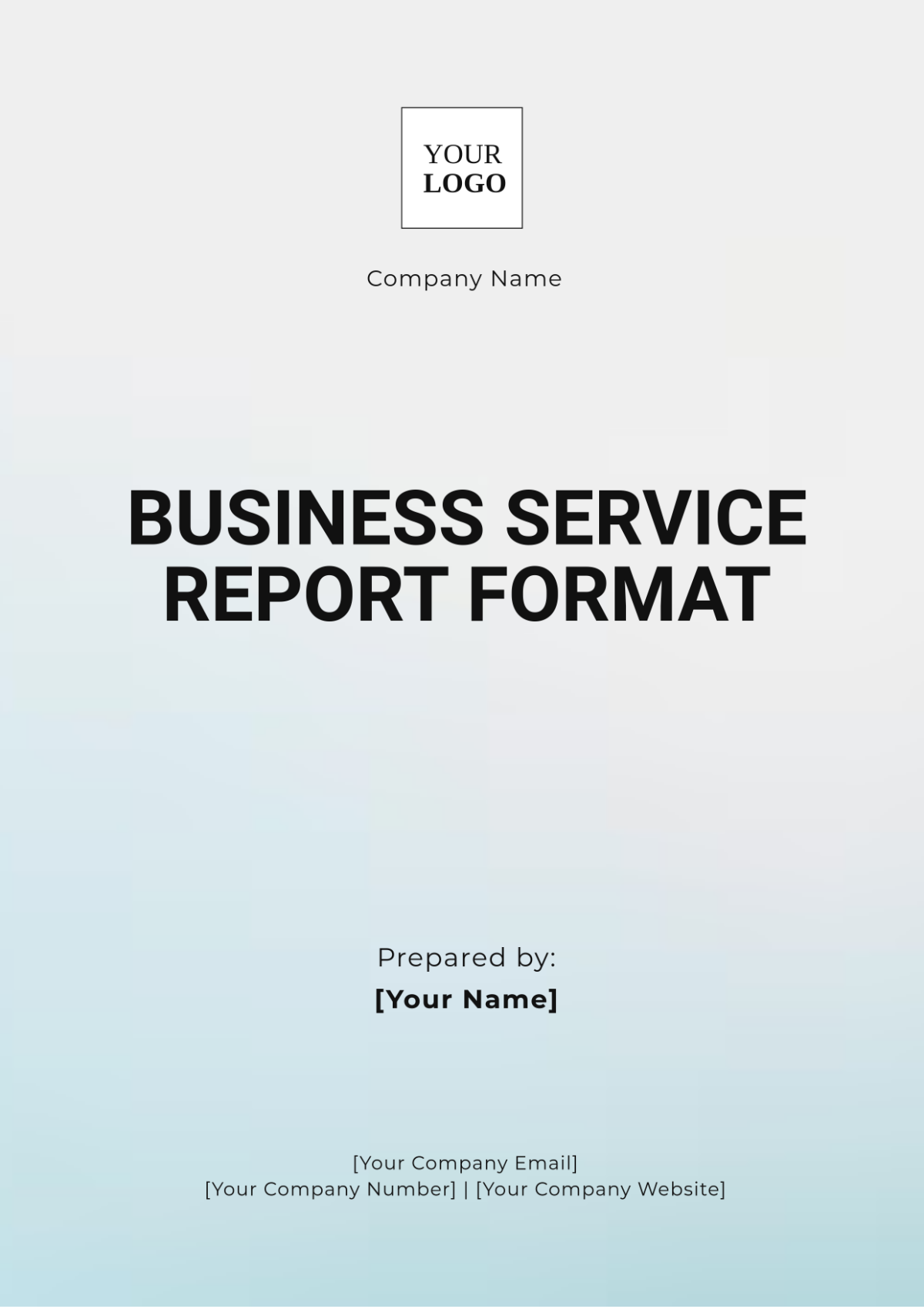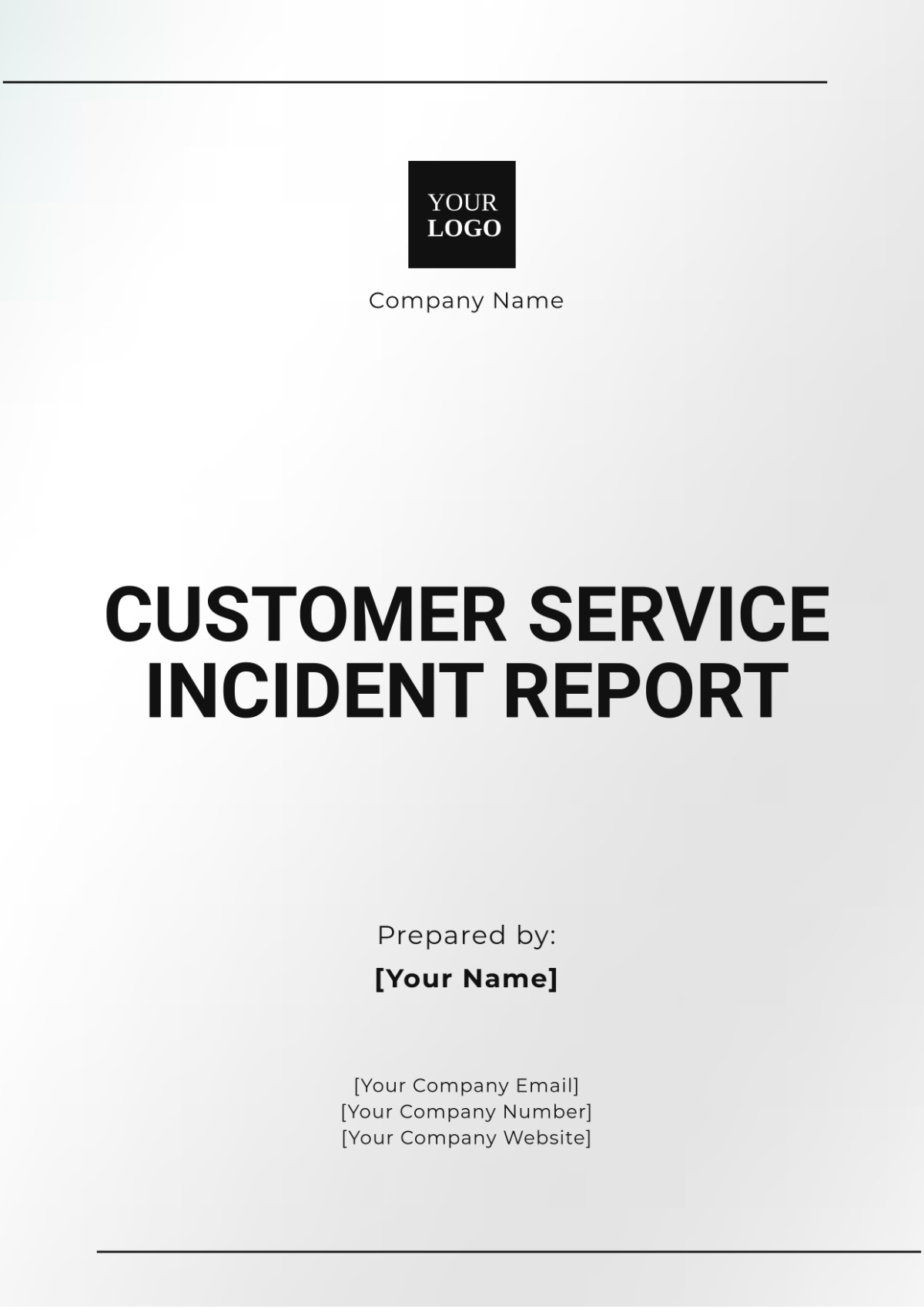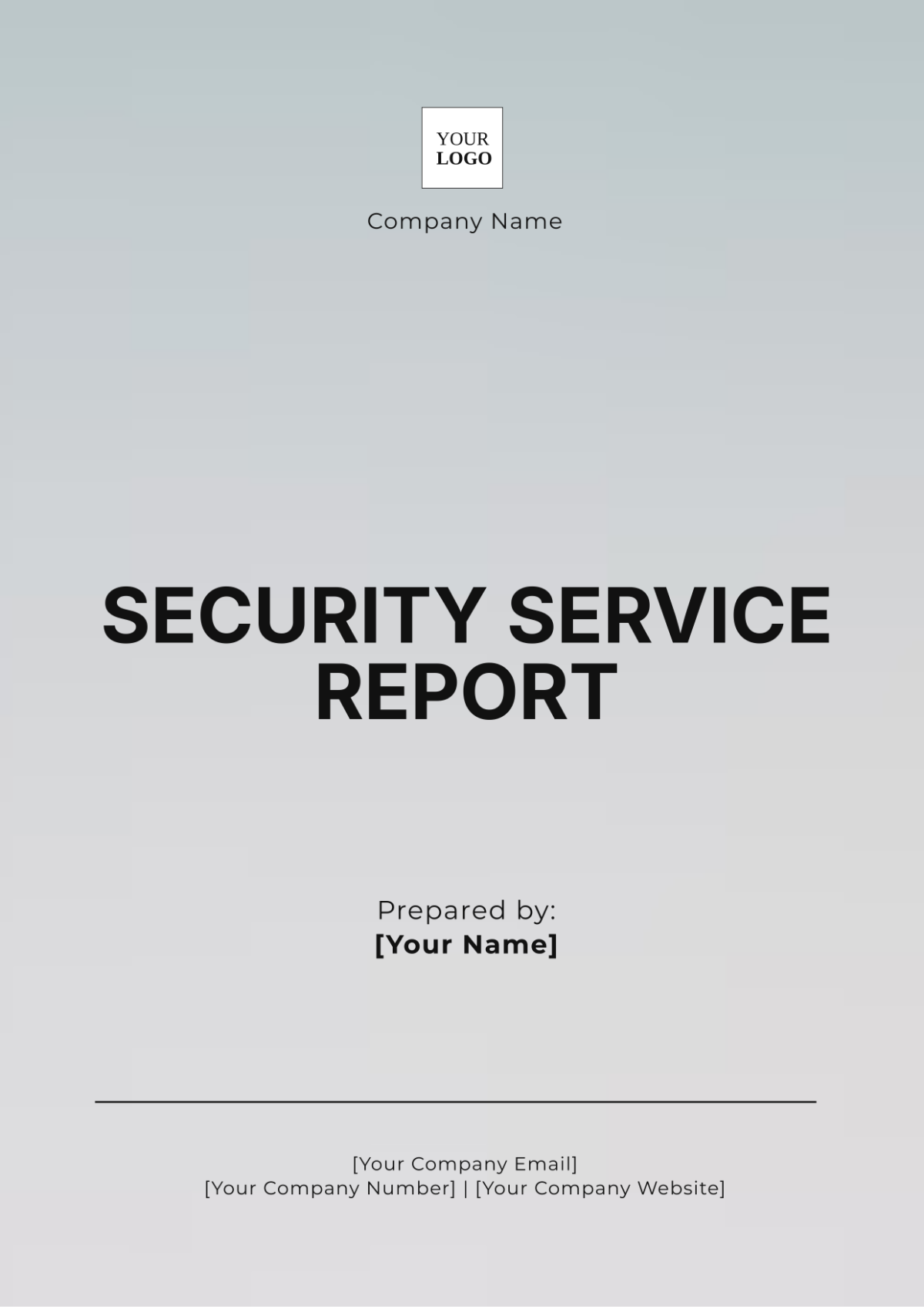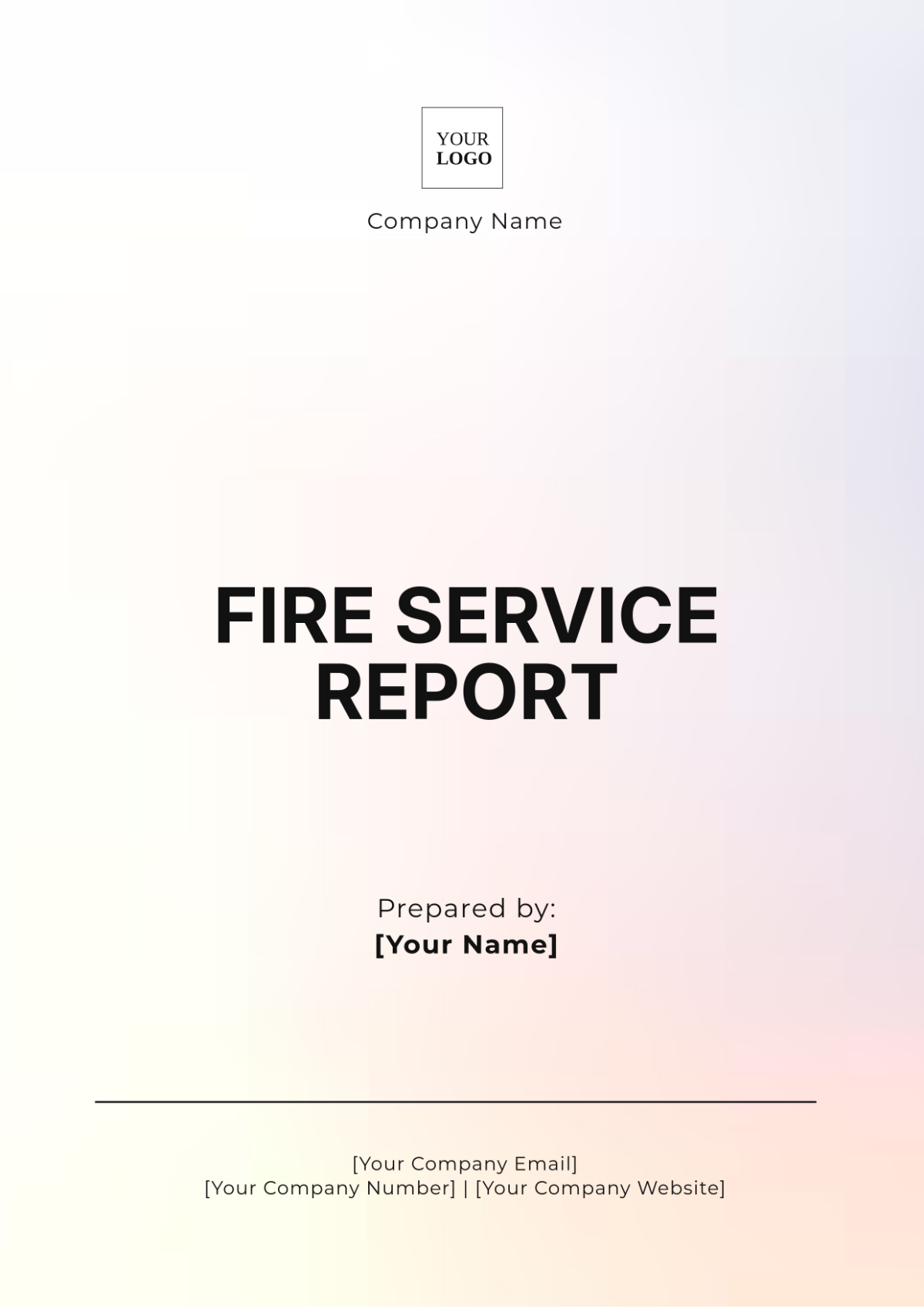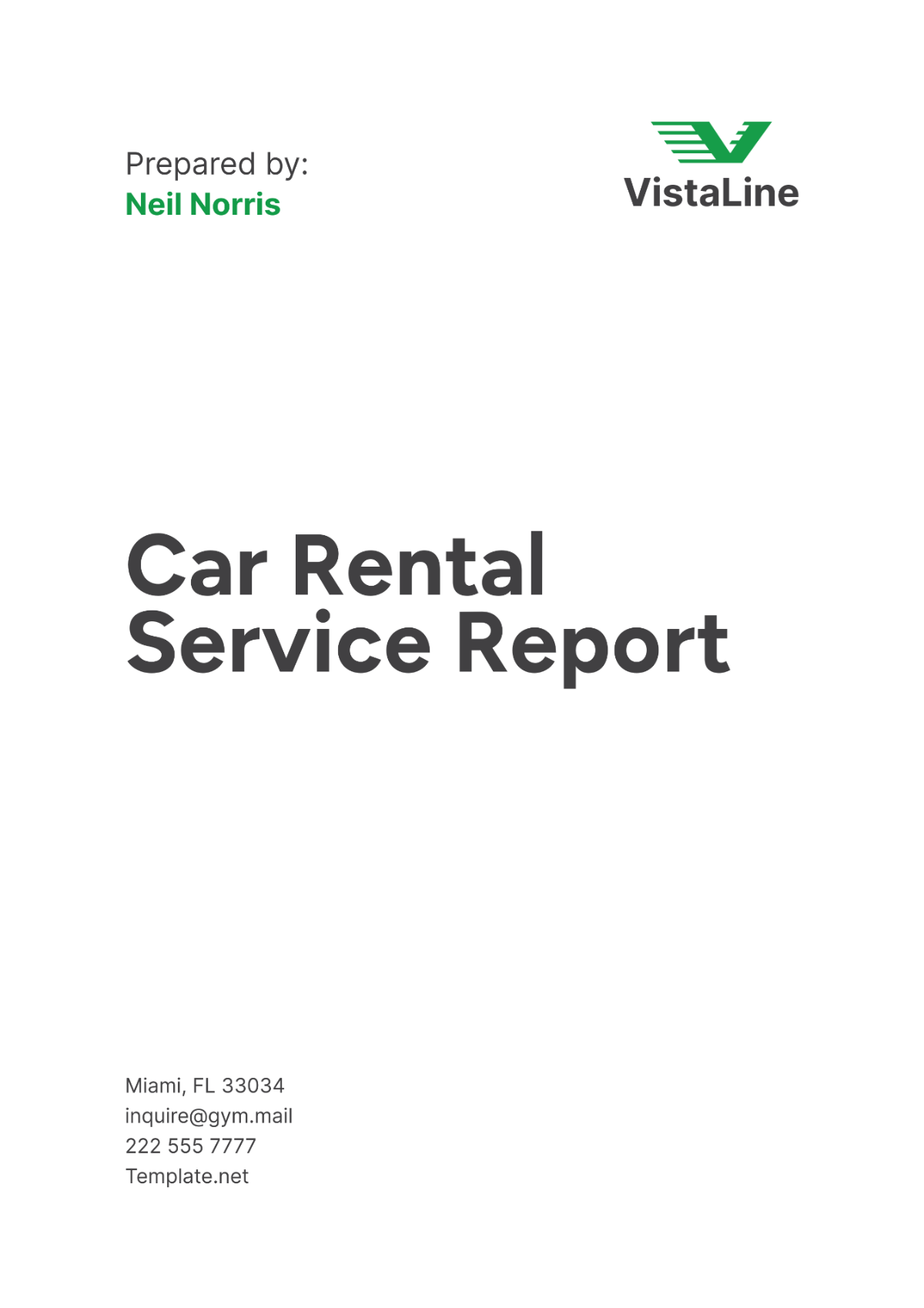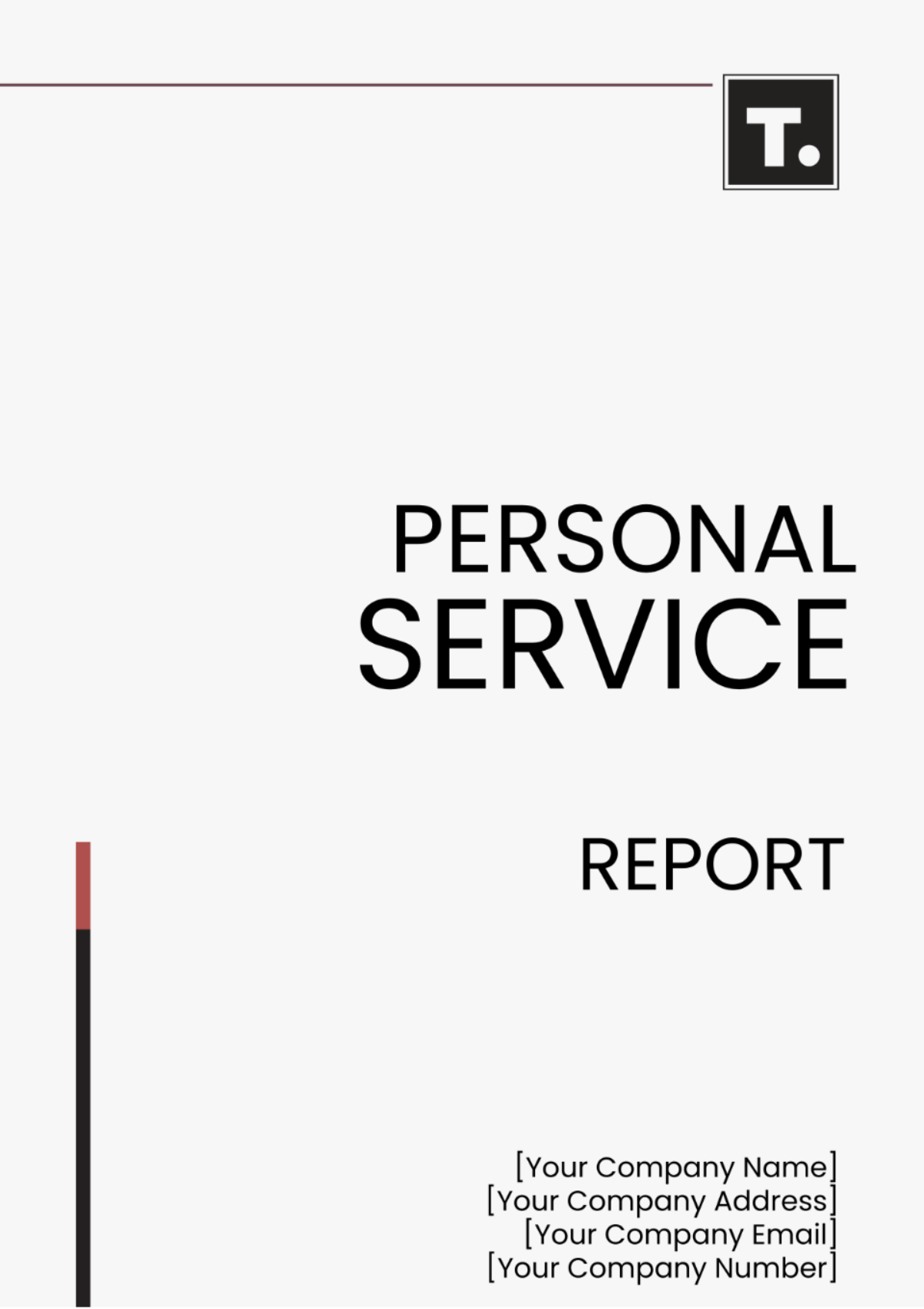Editorial Service Report
I. Introduction
A. Overview of the Report
This Editorial Service Report has been compiled by [Your Company Name] to offer a detailed account of the editorial services provided for [Product / Event Name]. It includes an in-depth analysis of the processes involved in the editing, proofreading, optimization, and delivery of content, alongside performance metrics and recommendations for future improvements. The primary goal of this report is to ensure transparency and provide a clear understanding of the editorial outcomes based on data and qualitative feedback received throughout the project. By aligning with our client's expectations and requirements, we have worked toward delivering superior content that meets all outlined objectives.
The scope of the editorial services provided is comprehensive, covering everything from the initial review to the final delivery, and from content creation to quality assurance checks. With this report, we aim to provide a clear picture of what was accomplished, how we met specific targets, and where improvements may be made moving forward.
B. Objectives of the Editorial Services
The editorial services rendered were aimed at achieving several key objectives for [Your Client Name]. The focus was on improving the overall quality of content, ensuring that all deliverables were of a high standard and met the required guidelines. The specific objectives included:
Content Quality Enhancement:
The primary aim was to ensure that the content produced was grammatically sound, free from typographical errors, and coherent in structure and flow. We focused on both high-level content quality and minute details like punctuation, sentence structure, and word choice.Brand Consistency:
A critical goal was to maintain the brand voice and identity consistently across all content formats, whether digital, print, or visual. We aimed to ensure that the tone, language, and stylistic elements aligned with the company’s vision and message, reinforcing their brand across multiple platforms.Audience Engagement:
We optimized content for readability and engagement. This involved adapting the writing style and content structure to match the preferences and expectations of the target audience, ultimately encouraging better audience interaction.Compliance with Guidelines:
Ensuring that content adhered to relevant legal, cultural, and linguistic guidelines was also a priority. This included abiding by regional content regulations, copyright laws, and any specific requirements set by [Your Client Name].
II. Scope of Work
A. Types of Content Reviewed
Our editorial services covered a wide range of content types that [Your Company Name] had produced for [Your Client Name]. The content reviewed and edited included:
Written Content
Articles and Blogs: These ranged from SEO-focused blog posts to in-depth feature articles. In total, we reviewed and edited over [240] articles and blogs during the period. Each article averaged about [1,500] words.
Press Releases: We edited [30] press releases, ensuring that they followed industry best practices and captured attention effectively.
E-books: A series of [3] e-books were revised for clarity, readability, and formatting consistency. These books ranged in length from [10,000] to [15,000] words each.
White Papers: A total of [5] white papers were edited, with an average length of [8,000] words, focused on complex topics in [industry sector]. We worked on refining their structure, flow, and technical accuracy.
Visual Content
Infographics: We optimized [50] infographics for clarity, ensuring they were visually appealing while maintaining consistency in messaging. Each infographic was carefully reviewed to ensure that the text content was accurate and easily digestible.
Presentation Slides: A total of [25] presentation decks were reviewed and refined. We helped improve the textual content, simplifying complex ideas and ensuring the slides aligned with the client’s branding guidelines.
Marketing Visuals: We edited and optimized over [80] marketing images, ensuring consistency in visual elements such as typography, colors, and branding features.
Digital Content
Website Pages: [40] website pages were reviewed for content quality, grammar, and SEO compliance. Specific attention was given to keyword optimization, internal linking, and adherence to the client’s SEO guidelines.
Social Media Posts: Over the course of the project, we optimized more than [300] social media posts across platforms, ensuring each post was concise, engaging, and aligned with the overall marketing strategy.
Email Newsletters: A total of [20] email newsletters were reviewed for readability, engagement, and compliance with best practices in email marketing.
B. Editorial Services Provided
The following services were delivered as part of our editorial process:
Service Area | Details |
|---|---|
Copyediting | Our team corrected grammar, punctuation, and syntax errors in [350] pieces of content. We focused on ensuring clarity and coherence in every paragraph. |
Proofreading | We performed detailed proofreading on [450] documents to correct spelling, punctuation, and other typographical errors. |
Content Optimization | Our content optimization service ensured that all pieces of content were properly formatted and keyword-optimized, helping to improve SEO rankings. This involved enhancing over [300] web pages and articles. |
Fact-Checking | We conducted extensive fact-checking, verifying more than [500] factual claims, references, and data points. |
Consistency Review | Ensuring consistency in terminology, tone, and formatting was crucial. We reviewed all content for these elements, revising over [250] documents to align with the established style guide. |
III. Methodology
A. Editorial Process Workflow
Our editorial process was designed to ensure that every piece of content met the highest standards. The process followed a step-by-step workflow as outlined below:
Initial Review:
We started by conducting an in-depth initial review of the content provided by [Your Client Name]. This phase involved identifying major content issues such as inconsistencies in tone, awkward phrasing, and structural issues. We reviewed the content for general flow and coherence, especially for large documents like white papers and e-books.Editing Phase:
During the editing phase, our team focused on improving sentence structure, fixing awkward phrasing, and eliminating redundant content. Our team also worked on improving content flow, making sure that each paragraph and sentence transitioned smoothly from one idea to the next.Fact Verification:
Fact-checking was critical, especially for technical content and data-heavy documents like white papers. Our editorial team cross-referenced sources, ensuring all factual claims were accurate. This step involved validating over [500] pieces of information, including statistics, quotes, and claims, against authoritative sources.Final Review:
After editing and fact-checking, the content went through a final review phase, which included proofreading for any remaining errors. We also applied formatting guidelines and double-checked consistency across various types of content, ensuring alignment with [Your Client Name]'s brand standards.Client Approval:
The final step in our process involved submitting the content to [Your Client Name] for approval. Any feedback received from the client was incorporated into the final draft before content delivery.
B. Tools and Technology Utilized
To enhance the efficiency and effectiveness of our editorial services, we utilized a variety of tools and technologies:
Tool Name | Purpose |
|---|---|
Grammarly | Utilized for grammar and style checks, helping to ensure content clarity and professionalism. |
Copyscape | Used for plagiarism detection, ensuring the originality of all written content. |
Yoast SEO | Helped with content optimization for search engines, improving SEO rankings for online content. |
Adobe Acrobat | Used for annotation and collaboration, particularly when reviewing larger documents like white papers and e-books. |
Hemingway Editor | Assisted with readability optimization, ensuring content was clear and easy to understand for a wide audience. |
IV. Key Metrics
A. Performance Metrics
To gauge the effectiveness of our editorial services, we tracked several key performance indicators (KPIs). These metrics provided insights into the quality, efficiency, and impact of our work:
Metric | Target Value | Actual Value |
|---|---|---|
Content Accuracy | 100% | 98.5% |
Average Turnaround Time | 48 hours | 45 hours |
Readability Score | >8 (Flesch) | 8.5 |
Engagement Rate | >30% | 35% |
Content Accuracy:
This metric reflects the percentage of content that met all quality standards with minimal errors. Our target was [100]%, but we achieved an accuracy rate of [98.5]% across all content.Average Turnaround Time:
We set an initial target of [48] hours for content delivery, meaning that each piece of content would be completed within this timeframe from the moment it was submitted. We successfully reduced this to an average of [45] hours, improving our efficiency while maintaining quality.Readability Score:
Based on the Flesch Reading Ease formula, we aimed to ensure that content was easily understood by a broad audience. Our target was a score of [8] or higher, and we achieved an average score of [8.5], which indicates that the content was highly readable.Engagement Rate:
Content engagement is a key metric for determining how well the target audience interacts with the material. We set a goal of achieving at least [30]% engagement, and our final rate of [35]% exceeded this target, highlighting the success of our content strategy.
B. Quantitative Data Representation
We have compiled the following data reflecting the progress and outcomes of our editorial services for [Product Name]:
Month | Content Reviewed | Errors Detected | Errors Resolved | Client Feedback Rating |
|---|---|---|---|---|
January | 120 | 150 | 145 | 4.8/5 |
February | 140 | 200 | 195 | 4.7/5 |
March | 130 | 160 | 157 | 4.9/5 |
V. Achievements
A. Content Quality Improvements
Grammar and Syntax Enhancements:
One of the key achievements during the editorial process was the enhancement of the grammatical structure and syntax across all reviewed content. Our team focused not only on fixing minor typographical errors but also on improving the flow of sentences, making sure that every piece read smoothly and was easily understandable. This process involved eliminating over [200] instances of awkward phrasing and restructuring more than [100] sentences to ensure the natural flow of ideas. We paid attention to subtle nuances in tone and ensured that the language used was both professional and appropriate for the intended audience.Key Actions Taken:
Identification and correction of grammatical errors (e.g., subject-verb agreement, use of tenses, and punctuation).
Simplification of overly complex or convoluted sentence structures without compromising the depth of the message.
Fine-tuning sentence transitions to improve the logical progression of ideas.
Result: The improvements made led to a noticeable enhancement in readability. As a result, content engagement increased, as it became easier for readers to follow the material and stay focused on the message. Moreover, our efforts in improving grammar and syntax significantly contributed to a better client satisfaction rate.
SEO Optimization Success:
Our editorial services included a strong focus on SEO (Search Engine Optimization), aimed at increasing the visibility of [Your Client Name]'s content on search engines. This was particularly important for digital content like blog posts, articles, and web pages. Our SEO strategies included the implementation of keyword optimization, enhancing meta descriptions, and improving internal and external linking structures. Through these strategies, we were able to increase the organic traffic to the client’s content by [25]% over a two-month period.Key Actions Taken:
Extensive research on relevant keywords that were incorporated naturally into the content.
Optimization of headings and subheadings for better keyword targeting.
Inclusion of relevant internal and external links to improve content's SEO score.
Use of tools like Yoast SEO to ensure content adhered to SEO best practices.
Result: As a result of these optimizations, multiple web pages and articles were able to achieve top positions in search engine rankings, significantly boosting traffic to the client’s website. Additionally, this led to improved brand awareness and higher engagement rates on social media platforms, where the content was shared.
B. Notable Milestones
Quick Turnaround:
A major milestone during the project was the quick turnaround time for content delivery. With a target of [48] hours for each piece of content, we succeeded in reducing this time to [45] hours on average, even while maintaining the high standards of quality expected by [Your Client Name]. This accomplishment demonstrated the efficiency of our editorial team and our ability to meet tight deadlines without sacrificing content quality.Key Actions Taken:
Streamlined workflow processes to ensure that content passed through each phase (editing, proofreading, and fact-checking) swiftly but thoroughly.
Ensured effective communication between the client and our editorial team to address any issues quickly and minimize delays.
Increased resource allocation during peak periods to ensure fast and efficient delivery without compromise.
Result: Faster delivery times meant that [Your Client Name] could push out content more quickly, keeping up with marketing and campaign schedules. This enhanced the overall productivity of the content team, allowing the client to stay on top of industry trends and digital marketing initiatives.
Client Satisfaction:
The feedback from [Your Client Name] throughout the project was overwhelmingly positive. With an average satisfaction rating of [4.8]/5, it is clear that our editorial services consistently exceeded expectations. Client feedback focused on our ability to maintain high-quality standards while delivering work promptly. In particular, the client expressed satisfaction with how we understood their brand's voice and effectively applied it to all content formats.Key Actions Taken:
We established a feedback loop with the client that allowed us to refine content based on their preferences, resulting in a high level of personalization in the delivered material.
Regular check-ins and status updates were conducted to ensure alignment with the client's needs and to address any concerns in a timely manner.
Adjustments were made to content where necessary to better align with [Your Client Name]’s brand style and tone.
Result: The high satisfaction rating was indicative of the strong partnership between [Your Company Name] and [Your Client Name]. This relationship was strengthened further by our attention to detail, responsiveness, and commitment to producing high-quality work. Client loyalty was solidified, and the client expressed interest in continuing this partnership for future projects.
VI. Challenges
A. Initial Setbacks
Complex Client Requirements:
One of the initial challenges we faced was aligning the content with the specific requirements and expectations set by [Your Client Name]. Some content had to follow very detailed and niche brand guidelines, particularly for technical content like white papers and e-books. These materials required a high degree of precision and adherence to complex terminologies. At first, this posed challenges for our editorial team in ensuring consistency and maintaining the correct tone and technical accuracy.Resolution:
We took several steps to overcome these challenges. Our editorial team became more familiar with [Your Client Name]'s unique language and industry terms. We also set up internal workshops to discuss the specific language and tone needed for various content types. Regular client feedback sessions were introduced to ensure that we met all the necessary requirements before the final approval of each content piece.High Volume of Edits:
With the large volume of content (over [500] pieces reviewed), the team faced difficulties in managing all the work without sacrificing quality. There were times when the volume of edits and revisions created bottlenecks, which threatened to delay delivery timelines. Given the tight deadlines set by the client, this was a considerable challenge.Resolution:
To mitigate this issue, we introduced a priority system for content that helped us focus on the most urgent projects first. Additionally, we expanded our team temporarily during peak periods, adding more skilled editors to help handle the increased workload without affecting turnaround times. This decision led to more balanced work distribution and prevented delays.
B. Resolutions Implemented
Increased Resource Allocation:
One key action to address the challenges posed by the high volume of content was to temporarily increase the editorial team by [30]%. By doing this, we ensured that each piece of content received the necessary attention to detail while still adhering to the deadlines. This increased capacity allowed us to maintain the quality of our services while meeting tight timelines.Feedback Integration:
Throughout the project, we actively sought out feedback from [Your Client Name] to ensure that the content produced met their expectations. By conducting weekly or bi-weekly meetings to discuss any issues or adjustments, we were able to fine-tune the content regularly. This feedback loop not only improved the quality of our work but also helped strengthen the relationship with the client.
VII. Recommendations
A. Short-Term Improvements
Content Calendar:
To further streamline the editorial process and enhance communication, we recommend implementing a shared editorial calendar. This calendar will allow both [Your Client Name] and [Your Company Name] to track all deadlines, milestones, and deliverables for each content project. Having a centralized view of all content production and editing timelines will allow for better coordination, help avoid last-minute rushes, and ensure that everything is delivered on time.Style Guide Development:
A well-defined style guide will ensure that all content produced for [Your Client Name] is consistent across all channels, from blog posts to marketing visuals. We recommend creating a detailed style guide that includes information on preferred tone, writing style, terminology, and visual elements. This guide will be particularly beneficial as the volume of content grows, ensuring that everyone involved in content creation and editing follows the same standards.
B. Long-Term Strategies
Automation of Repetitive Tasks:
As part of a long-term strategy, we recommend exploring AI-based tools and automation to assist with repetitive editorial tasks such as grammar checking, plagiarism detection, and basic fact-checking. These tools will help our editorial team save time on routine checks, allowing them to focus on more strategic aspects like content refinement, creativity, and ensuring content alignment with the brand.Regular Training Sessions:
To ensure the continued high quality of editorial work, we recommend regular training sessions for the editorial team. These sessions would cover the latest trends in SEO, content marketing, writing techniques, and new tools that could streamline the editing process. The editorial landscape is constantly evolving, and staying ahead of industry trends will help ensure that [Your Company Name] remains competitive and capable of meeting future demands.
VIII. Conclusion
A. Summary of Outcomes
In conclusion, the editorial services provided by [Your Company Name] for [Product / Event Name] have resulted in significant improvements across multiple areas. These include content quality, client satisfaction, and operational efficiency. Through diligent efforts to enhance grammar, optimize SEO, and ensure brand consistency, we were able to exceed client expectations. The improvements made in grammar and syntax, as well as our success in increasing web traffic and engagement, highlight the positive impact of our editorial services.
Our ability to meet deadlines with a quick turnaround time, alongside the high satisfaction rating from [Your Client Name], further demonstrates the success of the project. The overall feedback from the client was incredibly positive, and we are proud of the outcomes achieved. This project not only strengthened our client relationship but also showcased our team's ability to handle large-scale editorial projects.
B. Next Steps
Looking forward, we recommend moving forward with the proposed improvements, including the introduction of an editorial calendar and style guide, as well as exploring automation tools to improve efficiency. These actions will enable [Your Company Name] to continue providing high-quality editorial services while streamlining processes for better productivity.
Additionally, we recommend continuing to work closely with [Your Client Name] to address any evolving needs, ensuring that content remains relevant, engaging, and aligned with their brand objectives. The next step will be to schedule a follow-up meeting in [January 2051] to review progress and discuss any potential changes to the content strategy moving forward.
